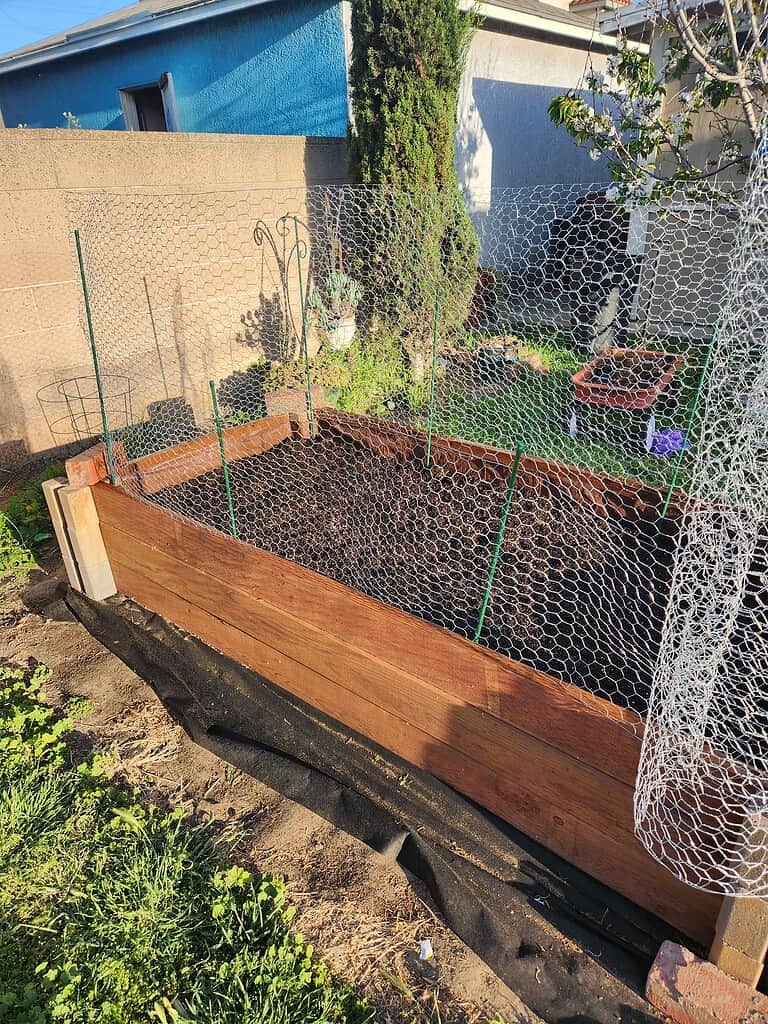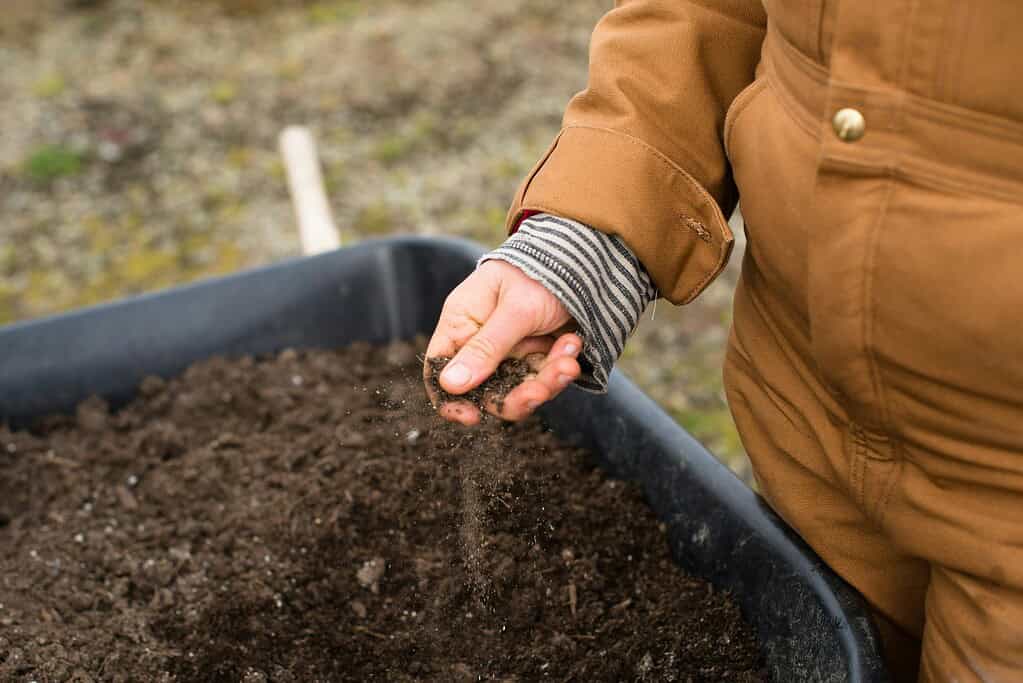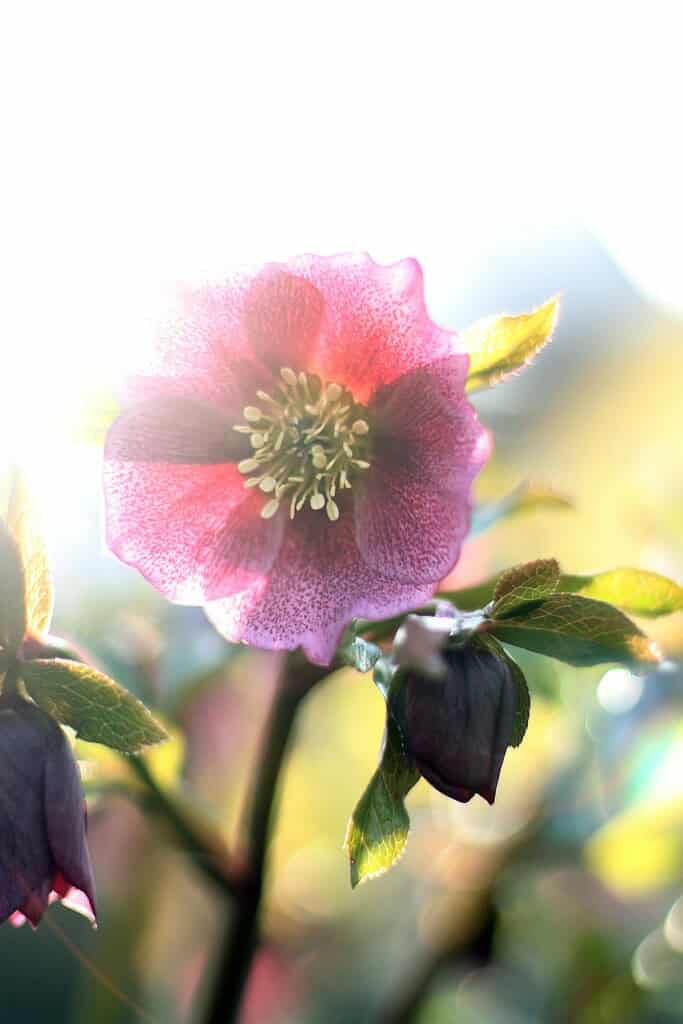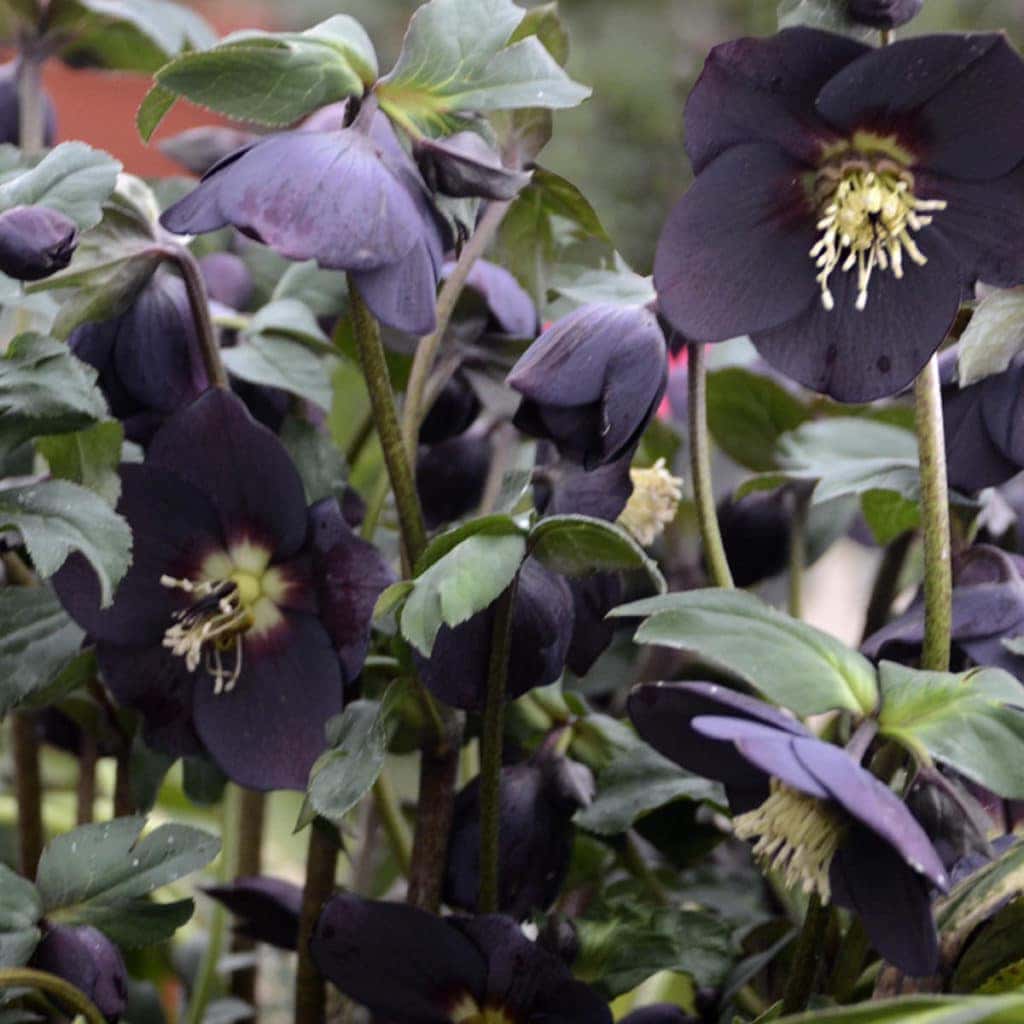Hellebores are hardy perennials known for their early blooms and evergreen foliage, making them a favorite for adding color to winter and early spring gardens.
Once planted, they require little maintenance and will come back year after year.
But to get the best results, it's important to understand where and how to plant them, how to care for them through the seasons, and which varieties suit your landscape goals.
In this article, I'll walk you through everything you need to know to successfully grow hellebores in your garden.
Hellebores Plant Profile
| Feature | Details |
|---|---|
| Botanical Name | Helleborus spp. |
| Other Names | Lenten rose, Christmas rose |
| Family | Ranunculaceae (buttercup family) |
| Plant Habit | Clump-forming evergreen or semi-evergreen perennial |
| Size | Typically 1 to 2 feet tall and wide |
| Light Needs | Partial shade; winter sun and summer shade preferred |
| Soil Preference | Moist, well-drained, rich in organic matter |
| pH Range | Neutral to slightly alkaline (6.5–8.0) |
| Bloom Season | Late winter to early spring |
| Flower Colors | White, green, pink, purple, red, near-black, yellow (varies by cultivar) |
| Hardiness Zones | USDA zones 4–9 (varies slightly by species) |
| Native Range | Europe and western Asia |
Best Location to Plant Hellebores in Your Garden
Where you plant hellebores affects how well they grow and how much you’ll enjoy their blooms. These plants prefer specific conditions that mimic their natural woodland habitat.
Light Conditions
Hellebores grow best in areas with winter sun and summer shade.
A good place is under deciduous trees. These trees lose their leaves in winter, which lets sunlight reach the plants during their blooming period.
In summer, the tree canopy provides shade, protecting hellebores from strong afternoon sun, which can scorch their leaves.
Planting on a Slope or Raised Bed
Hellebore flowers typically face downward. Planting them on a gentle slope, hillside, or in a raised bed brings the blooms closer to eye level.
(If you’re thinking about planting in a raised bed, you might also find these simple raised garden bed ideas helpful for inspiration and layout tips.)
This simple placement allows you to see the flower details more easily without needing to bend over or lift the flowers.
Ideal Soil for Growing Hellebores
Hellebores prefer well-drained soil that holds some moisture but doesn’t stay wet. The soil should be rich in organic matter and have a neutral to slightly alkaline pH.
If your soil is heavy clay or very sandy, work in compost or well-rotted manure to improve the structure before planting.
Learn more about creating nutrient-rich soil in how to compost for beginners.
How to Plant Hellebores in the Garden: Step-by-Step Guide
Once you've chosen the right time and location, proper soil preparation and planting technique will ensure your hellebores thrive.
Below are the detailed steps to get them planted the right way.
Step 1: Prepare the Soil
Hellebores grow best in rich, well-draining soil with a neutral to slightly alkaline pH (around 6.5–8.0). They do not tolerate soggy soil, so drainage is just as important as fertility.
Start by loosening the soil to a depth of 12 inches using a garden fork or spade. This improves root penetration and prevents compaction. Then, mix in organic matter such as:
- Compost
- Leaf mold
- Well-rotted manure
This not only feeds the plant slowly over time but also helps the soil retain just the right amount of moisture.
Avoid adding synthetic fertilizer at this stage – it’s unnecessary and can push soft growth that’s more vulnerable to disease.
If your native soil is heavy clay or drains poorly, consider raising the bed or planting on a slope to avoid root rot.
Step 2: Dig the Planting Hole
Dig a hole that's slightly wider and just as deep as the hellebore’s root ball. The goal is to allow the roots to spread naturally without being cramped or forced into a tight space.
Check the crown position carefully – this is where the stems meet the roots. It should sit exactly at soil level. If it's too deep, the plant may rot. If it's too high, the roots may dry out or become exposed.
Step 3: Plant and Backfill Gently
Place the plant in the hole, then begin filling it in with the soil mixture you prepared. Firm the soil gently around the base, but don’t pack it tightly.
You want the soil to make contact with the roots, but still allow for airflow and drainage.
After planting, give the area a thorough watering to help settle the soil around the roots and eliminate air pockets.
Step 4: Space Plants Properly
If planting multiple hellebores, space them about 15 to 18 inches apart.
These plants form clumps over time, and proper spacing prevents overcrowding, encourages better air circulation, and reduces the risk of fungal issues.
Step 5: Mulch the Right Way
Apply a thin layer of organic mulch (such as shredded bark, compost, or leaf mold) around the base of the plant. This helps conserve soil moisture, suppress weeds, and regulate soil temperature.
However, it’s critical to keep mulch away from the crown of the plant. Piling mulch against the stems can trap moisture and encourage rot, especially during wet or cold weather.
For more ideas on choosing and using mulch effectively, check out practical garden mulch ideas.
Designing with Hellebores in the Landscape
Hellebores are not just early bloomers – they’re versatile design plants that can bring interest to your garden throughout the year.
With thoughtful placement and companions, you can turn them into a focal point or part of a layered display.
Best Companion Plants for Hellebores
Instead of planting hellebores alone in bare soil, combine them with other shade-tolerant plants that complement their bloom time, leaf shape, or color. This creates a more dynamic, full look.
Good companion plants include:
- Snowdrops and crocuses – for early spring blooms alongside hellebores
- Ferns and hostas – for contrasting foliage during summer
- Bleeding heart and heuchera – for texture and color through spring and early summer
- Daffodils – for layered spring flowering
Mixing these plants also extends the visual interest of your garden beyond the hellebore’s bloom season.
For more detailed pairings, check out our expert companion planting guide.
Using Hellebores for Groundcover
Hellebores work well in mass plantings or drifts, especially under trees or along shaded borders. When planted in groups, their evergreen leaves form a lush groundcover that suppresses weeds and protects the soil.
To create this effect, space plants close enough so they touch as they mature. Choose varieties with strong foliage to maintain structure year-round.
How to Care for Hellebores
Once established, hellebores are low-maintenance plants. But a few timely tasks each year will keep them healthy and looking their best.
How to Water and Fertilize Hellebores
Hellebores need consistent moisture, especially during dry spells in spring and fall.
However, they don’t tolerate soggy conditions. Water deeply when the top inch of soil feels dry, but make sure the soil drains well.
They rarely need fertilizer if grown in rich soil. Instead, apply a top-dressing of well-rotted compost or manure once a year – ideally in late fall or early spring.
Avoid chemical fertilizers, which can encourage soft growth that’s more prone to disease.
When and How to Trim Hellebore Foliage
For Helleborus x hybridus (Lenten roses), cut back the old leathery leaves in late winter or early spring, just as new flower stalks start to appear. This:
- Makes the blooms more visible
- Improves air circulation
- Reduces the chance of disease
For other hellebore species, don’t cut foliage unless it’s damaged, diseased, or unsightly, and only do this in fall.
Common Care Mistakes to Avoid
- Covering the crown with mulch: Always keep mulch away from the base of the plant to prevent rot.
- Overfertilizing: Hellebores prefer lean soil with organic matter. Too much feeding can reduce flowering.
- Poor drainage: Waterlogged roots can kill the plant. Fix drainage issues before planting.
How to Display Hellebore Flowers Indoors
While hellebores shine in the garden, their unique blooms can also be enjoyed inside the home. One simple method preserves their beauty without needing a full flower arrangement.
Floating Hellebore Flowers in a Bowl
The most effective way to bring hellebores indoors is by snipping off the flower heads and floating them in a shallow bowl of water. This method:
- Highlights the intricate petal patterns and colors
- Keeps the flowers fresh for several days
- Requires no vase or stem support
Use a wide, low bowl and clean water. Arrange the blooms so they aren’t crowded, and replace the water daily to extend their appearance.
This approach works especially well with varieties that have speckled petals, double blooms, or rare colors that are often hidden when viewed on the plant.
How to Propagate and Control Hellebores in the Garden
Hellebores can multiply naturally over time, often without any extra work from you.
Whether you want to encourage more plants or keep them contained, it’s important to understand how they reproduce and how to manage their spread.
How Hellebores Spread Naturally Through Self-Seeding
Most hellebores, especially Helleborus x hybridus, readily self-seed in the garden.
As the flowers fade, they form seed pods that eventually dry out and drop seeds around the base of the plant. These seeds germinate on their own, creating volunteer seedlings nearby.
If you grow multiple varieties, the seedlings may become natural hybrids – producing flowers that are different in color and shape from the parent plants.
This can lead to a mix of unique and interesting plants over time.
Letting them self-seed can be a simple and cost-free way to expand your hellebore patch.
How to Manage Unwanted Self-Seeding
If you prefer a tidy look or want to keep your varieties pure, you can control self-seeding by:
- Deadheading spent flowers before seed pods mature
- Removing seed pods as soon as they appear
- Weeding out unwanted seedlings in early spring while they’re still small
This approach helps prevent overcrowding and keeps the garden design more predictable.
Which Hellebore Varieties Can Be Divided
Some hellebores can be propagated by division, but not all types respond well to this method.
- Good candidates for division: Helleborus x hybridus and other clumping types
- Poor candidates for division: Helleborus argutifolius, H. foetidus, H. lividus, and H. × sternii
These varieties have woody crowns and are best propagated from seed instead of being split.
If dividing, do it in early fall or after flowering in early spring, and be sure to dig carefully to avoid damaging the root system.
Best Hellebore Varieties to Grow for Foliage, Flowers, and Pollinators
Choosing the right hellebore variety depends on your garden goals – whether you're looking for showy blooms, year-round foliage interest, or plants that support early pollinators.
Here’s how to pick the best types for your needs.
Hellebore Varieties with Decorative Foliage
Some hellebores are just as valuable for their leaves as for their flowers. These varieties offer attractive foliage even when not in bloom:
- Helleborus argutifolius (Corsican hellebore): Known for its bold, holly-like leaves that stay glossy and green year-round.
- Frostkiss® Series: Offers hybrids with silver marbling or netted veining on the leaves, adding interest through multiple seasons.
These types are excellent for evergreen structure in shady borders or woodland-style gardens.
Hellebores with Outward-Facing Blooms
Most hellebores have nodding, downward-facing flowers, but some varieties are bred to hold their blooms more outward or upright.
These are easier to see in the garden and draw more visual attention.
- Helleborus niger (Christmas rose): One of the few species with naturally outward-facing blooms.
- Select Lenten rose hybrids (Helleborus x hybridus): Some cultivars have been bred for more open flower angles.
Outward-facing flowers work well in raised beds, containers, or slopes where bloom visibility matters.
Best Hellebores for Pollinators
If you’re planting for pollinator support, choose single-flowered varieties. Double flowers may look dramatic but often block access to nectar.
Single hellebores:
- Provide nectar early in the year when few other sources are available
- Offer shelter within their nodding blooms for cold-season insects like bumblebees
Look for non-frilly, open-faced cultivars to maximize their usefulness to wildlife.
Start Planting Hellebores the Right Way
Hellebores are reliable, beautiful, and low-maintenance perennials that can elevate any shaded garden space – especially in late winter and early spring when few other plants are in bloom.
By choosing the right planting location, preparing the soil properly, using thoughtful companion plants, and selecting the right varieties, you can enjoy healthy plants and a stunning display year after year.
Whether you're aiming for a layered woodland garden or a compact winter border, hellebores offer the flexibility and resilience that make them a long-term favorite among gardeners.
Have questions or tips from your own experience growing hellebores? Comment down below – we’d love to hear from you!
FAQs
Can I plant hellebores under evergreen trees?
It’s not ideal. Evergreen trees block winter sunlight, which hellebores need to bloom properly. Deciduous trees are better, as they allow light through in winter and provide shade in summer.
Do hellebores grow well in containers?
Yes, hellebores can grow in pots if the container is deep, has good drainage, and is filled with rich, well-draining soil. Use a mix of compost and gritty material like perlite or bark. Keep the crown at soil level and protect the container from extreme freezes.
How long do hellebore plants live?
With proper care, hellebores can live 15 years or more in the same location. They are long-lived perennials that get better with age, especially when planted in suitable conditions and left undisturbed.
Are hellebores deer-resistant?
Yes, hellebores are generally deer-resistant due to their leathery leaves and mild toxicity. However, no plant is completely deer-proof – damage can still occur if food is scarce.
Can hellebores tolerate dry conditions once established?
Yes, hellebores are somewhat drought-tolerant once established, but they prefer consistent moisture. Deep watering during dry periods – especially in spring and fall – will help support healthy blooms and root growth.
Ready To Transform Your Garden?
Are you looking for the best way to layout your garden beds? Maybe you're feeling a bit stuck on how to make the most of your space?
We’ve got you covered! Check out our 101+ Garden Bed Layout Ideas for your next raised bed project. This guide is filled with creative and practical ideas that can help you design a garden that fits your style, whether you’re just starting out or have been gardening for years.
Get your copy today and get inspired to bring your gardening dreams to life.










